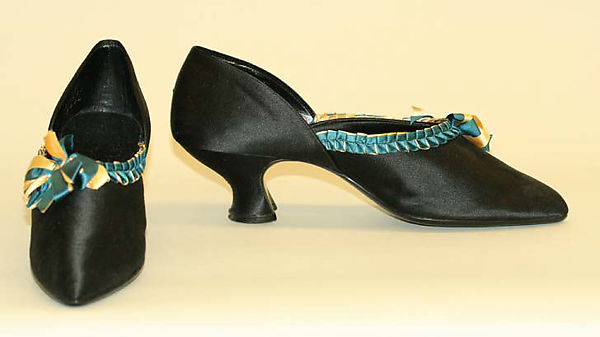The Evolution of Women's Shoes: The "Roaring" 1920s
- So Into You

- Apr 28, 2020
- 2 min read
Updated: Aug 27, 2020
A century ago, changes in society, accelerated by the hardships of World War I, fostered increasing economic independence for women with which shorter skirts became identified. Many women greeted this new look with pleasure and saw it as more practical and better suited to a time when women were entering the workforce. As skirt lengths continued to rise-ten to twelve inches above the floor, so did the outrage against them by conservative parties who tried to preserve the moral order of the previous century when women stayed at home to raise a family. Attempts by designers to introduce longer skirts between 1922 and 1924 were met with protests by many women who felt the shorter skirts were more youthful and modern. Thus, the fashion for short skirts prevailed.
Because the shorter skirts exposed more of women's legs, designers and consumers began to consider shoes to be an important fashion accessory. After decades of modesty, the 1920s saw women fall for skin revealing shoes. Increased attention on the feet encouraged experimentation and innovation in women's shoe design.
At the beginning of the decade, women's shoes featured comfortable rubber soles, pointed toes and either two-inch, curved 'Louis' heels, one-and-three-quarter-inch 'Military' heels or one-inch 'Walking' heels. These would have been available in a selection of conventional colours such as brown, tan, black, white and grey.
As the decade wore on, women began to sport shoes with rounded toes and either chunky, two-inch 'Cuban' heels or 'Spanish' heels in hues of silver, gold, red and green.
Images courtesy of The Metropolitan Museum of Art
The most classic style of the 1920s featured a strap across the top of the foot - either one strap, two straps, three straps, cross straps, or t-straps - often made of brocade, satin, or another delicate material. The straps were buttoned on one side of the shoe, and fashionable button covers made of enamel, rhinestones, silver, gold, or brass were added for a little extra flair. Not only were these strapped shoes stylish, but also securely held women's feet in place while they were dancing the Charleston.
Plain slip-on pumps, nearly identical to those worn today, were also popular footwear of choice in the roaring twenties. 18th century inspired colonial shoes, walking Oxfords, and boots made up the other shoe styles of the 1920s.
References:












































Comments